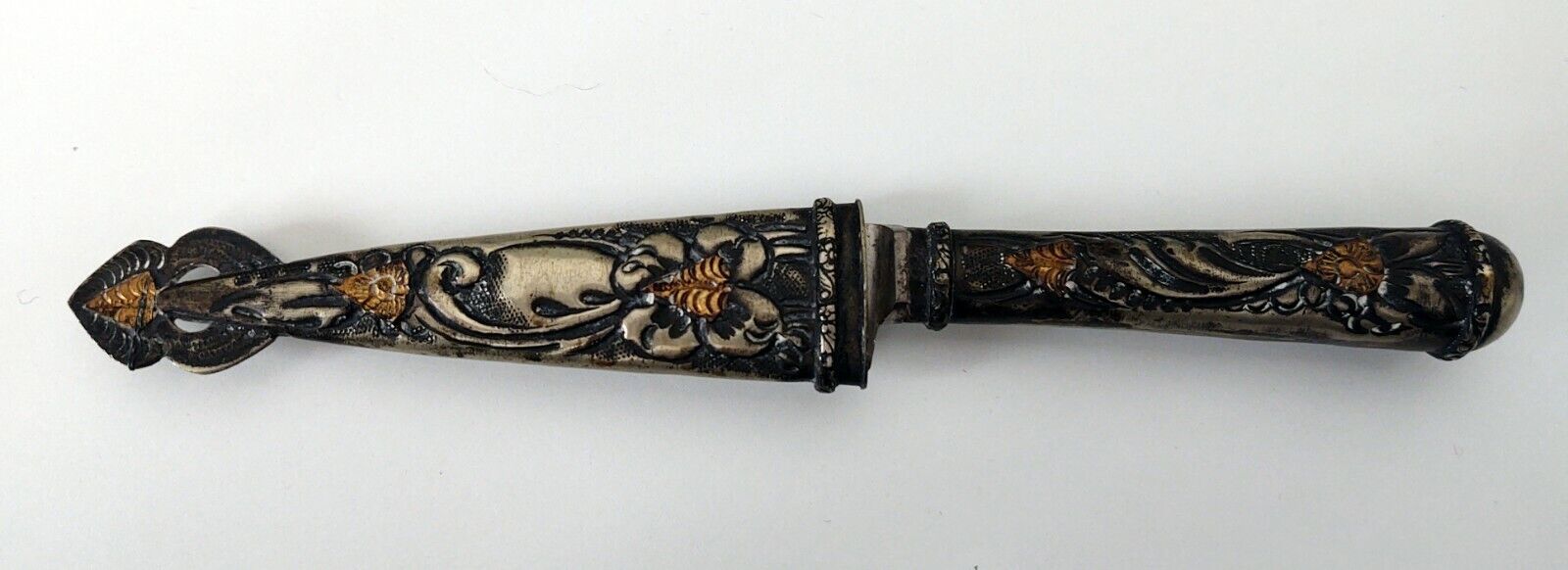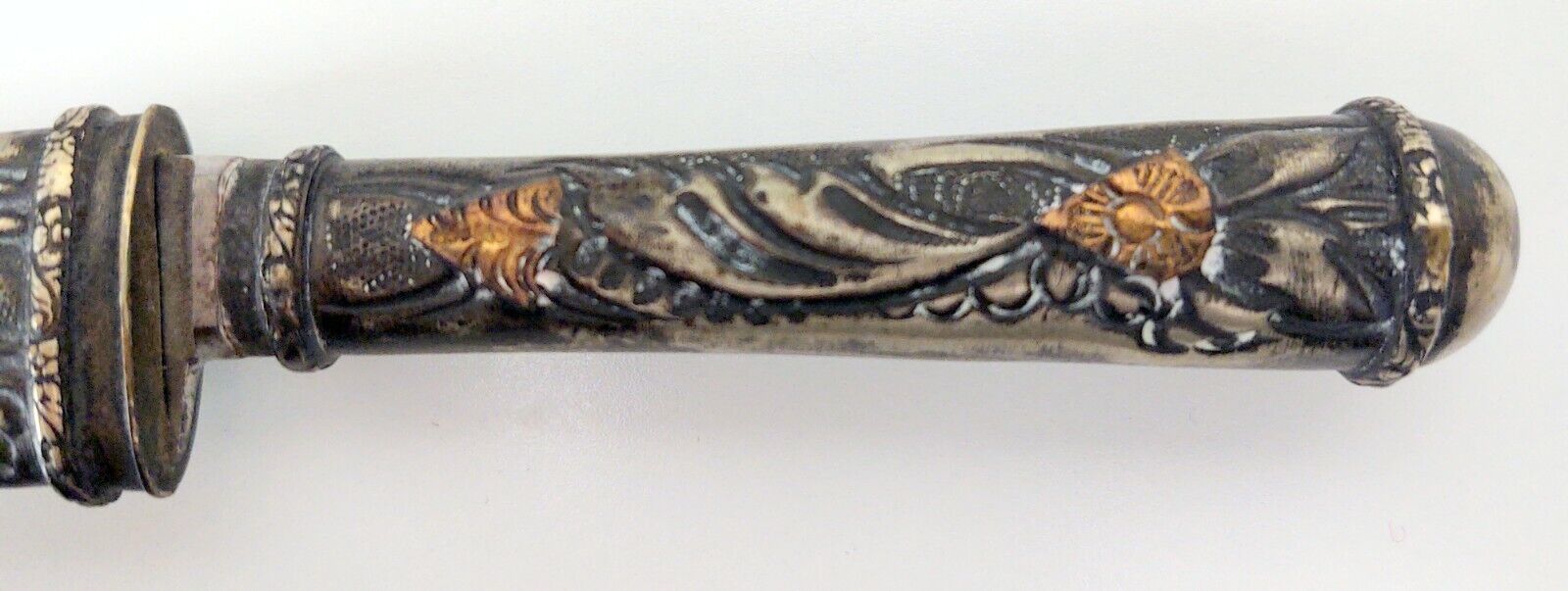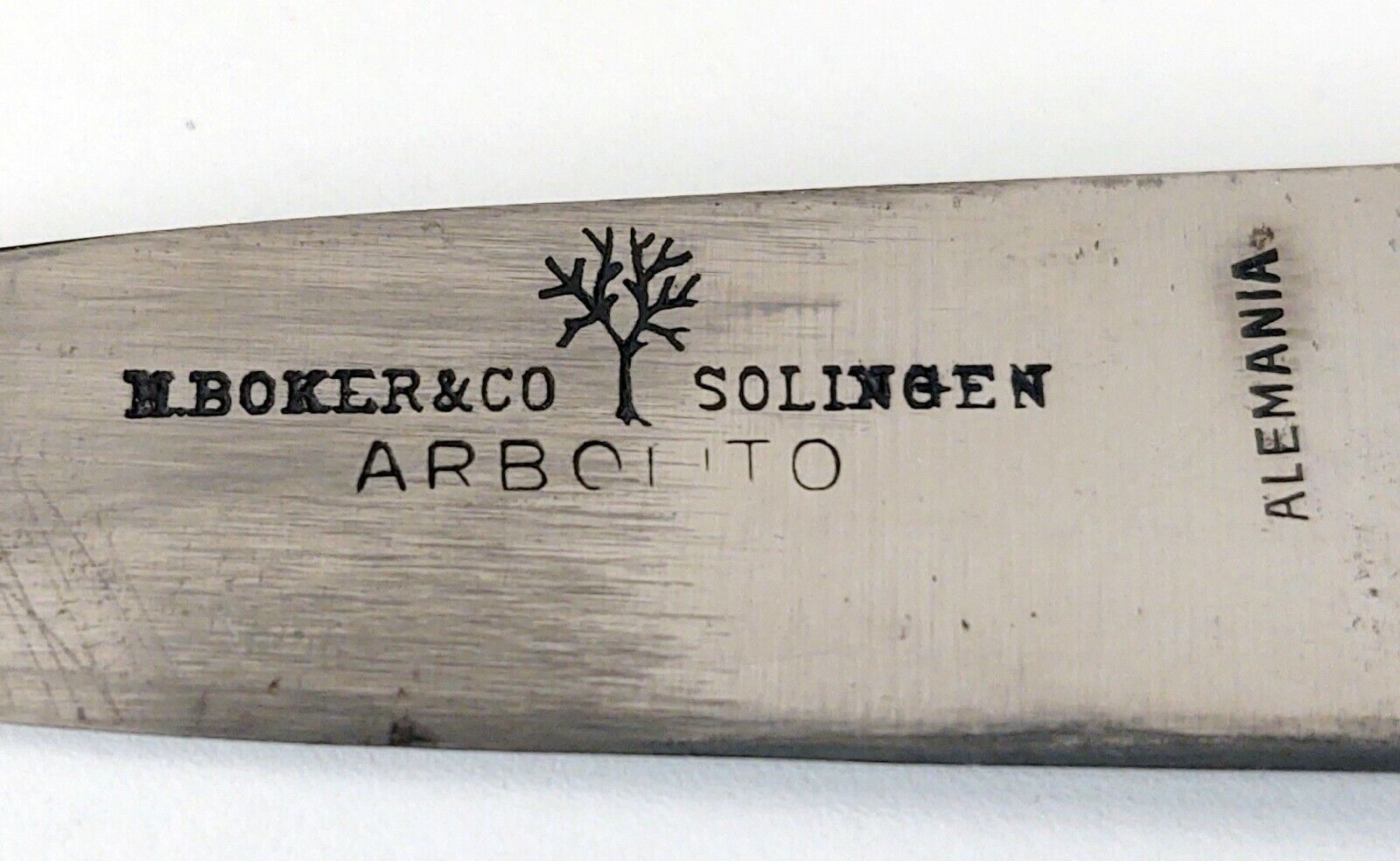-40%
H BOKER SOLINGEN GAUCHO KNIFE C.1915 STERLING SILVER 800 GOLD INLAY
$ 316.8
- Description
- Size Guide
Description
Argentinian Gaucho Knife7 1/2" total length (blade is 3 1/4")
with Boot Clip
Made c 1915 based on makers Tree marking on blade
The Gaucho´s Arms and Tools
Gauchos
were simple poor people; skilled riders and handlers of cattle, they had and required very little equipment. Among the
gaucho's
tools and weapons were the
lazo
(lariat) and
bolas
(a throwing weapon inherited from the Indians). The hobbles were another humble, but important, tool which, used to tie together the front legs of the
gaucho's
horse, prevented the loss of the horse out in the middle of the great lonely plains. A
gaucho
without horse, in the middle of those great plains, was a dead man. Then, of course, there was the knife, an edged weapon and a multipurpose tool used almost at any time during the
gaucho's
day.
Gauchos
had limited access to firearms, which in our territories were reserved to the high or military classes almost exclusively. For this same reason,
gauchos
seemed to look upon firearms with disdain and little confidence, preferring edged weapons over all other types.
Several types of knives were used by
gauchos
in the past. They received different names depending on shape, general design and local customs. It is worth noting that, being persons of little literacy,
gauchos
called their knives by different names, paying little attention to their true characteristics but using the names they would have heard from their elders. Thus, a knife was a
facón
for one person, but the same knife may have been called a
daga
by another. It is also worth noting that the features which must be present in a specific specimen in order to classify it as a particular type are subject to debate, as there is no definite or rigid pattern or list of characteristics which exactly define each one.
The present classification, which I propose in my books and writings, is that classification that I have used during the last 25 years and can be considered of rather "modern" usage, though based in the local customs and the most widely accepted morphology of each variant. Some authors accept these definitions as offered while others propose some little changes. When considering
gaucho
knives, we must always bear in mind that their manufacture was more a result of improvisation in taking advantage of the available materials, than a true cutlery product, as with the English cutlery trade.
As a matter of fact, the local "cutlery industry" was very simple: Silversmiths took blades imported from Europe and provided rich handles and occasionally sheaths. Simple blacksmiths made entire simple knives with whichever metal was at hand. Old or broken swords, sabers or bayonets donated their blades to make
facones
or
dagas
.




















